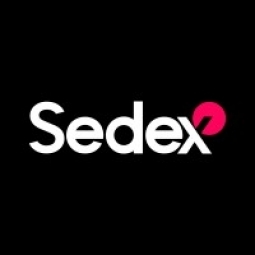技术
- 网络安全和隐私 - 身份认证管理
- 平台即服务 (PaaS) - 应用开发平台
适用功能
- 物流运输
- 采购
用例
- 库存管理
- 供应链可见性(SCV)
关于客户
三得利是一家全球饮料公司,拥有多元化的品牌组合,包括 Ribena、Lucozade、Jim Beam 波本威士忌以及优质日本威士忌 Hibiki、Yamazaki 和 Hakushu。该公司在世界各地开展业务,每个地区都有自己独特的供应商管理方法。三得利致力于创造人与自然的和谐,这体现在其更负责任、更可持续地采购的使命中。该公司认识到降低供应链相关风险的重要性,并致力于改善供应商现场的工作条件。
挑战
三得利是一家全球饮料公司,在负责任和可持续地管理其供应链方面面临着挑战。该公司的使命是创造人与自然的和谐,这需要更负责任的采购。然而,该公司在管理供应商现场的声誉风险和实际风险方面遇到了困难。三得利独立管理环境、社会和治理 (ESG),以减轻供应链相关风险。然而,该公司的全球业务采用不同的方法来管理供应商,三得利经营所在的不同国家之间的现代奴隶制立法也有所不同。三得利认识到,为了在全球供应链中产生更大的影响并为工人带来积极的改变,他们需要在更广泛的框架内开展工作。
解决方案
三得利决定加入 Sedex,这是一个全球会员组织,致力于推动全球供应链中道德和负责任的商业实践的改进。 Sedex 为三得利提供了一套通用工具和标准,用于与供应商协作并简化数据共享。三得利开始与 Sedex 客户经理合作,根据满足即时需求和确定持续改进活动来设计负责任的采购策略。三得利使用 Sedex 自我评估问卷 (SAQ) 来管理供应商信息,这是使用电子表格的重大升级。 SAQ 涵盖多个风险主题,并与道德贸易倡议 (ETI) 基本准则和 SA8000 标准保持一致。三得利供应商的反应与风险评分直接相关,三得利将其用于政策和指南的制定。三得利还积极与供应商合作,就供应商可以改进的领域提供建设性反馈。
运营影响
数量效益

Case Study missing?
Start adding your own!
Register with your work email and create a new case study profile for your business.
相关案例.

Case Study
Remote Temperature Monitoring of Perishable Goods Saves Money
RMONI was facing temperature monitoring challenges in a cold chain business. A cold chain must be established and maintained to ensure goods have been properly refrigerated during every step of the process, making temperature monitoring a critical business function. Manual registration practice can be very costly, labor intensive and prone to mistakes.

Case Study
Hospital Inventory Management
The hospital supply chain team is responsible for ensuring that the right medical supplies are readily available to clinicians when and where needed, and to do so in the most efficient manner possible. However, many of the systems and processes in use at the cancer center for supply chain management were not best suited to support these goals. Barcoding technology, a commonly used method for inventory management of medical supplies, is labor intensive, time consuming, does not provide real-time visibility into inventory levels and can be prone to error. Consequently, the lack of accurate and real-time visibility into inventory levels across multiple supply rooms in multiple hospital facilities creates additional inefficiency in the system causing over-ordering, hoarding, and wasted supplies. Other sources of waste and cost were also identified as candidates for improvement. Existing systems and processes did not provide adequate security for high-cost inventory within the hospital, which was another driver of cost. A lack of visibility into expiration dates for supplies resulted in supplies being wasted due to past expiry dates. Storage of supplies was also a key consideration given the location of the cancer center’s facilities in a dense urban setting, where space is always at a premium. In order to address the challenges outlined above, the hospital sought a solution that would provide real-time inventory information with high levels of accuracy, reduce the level of manual effort required and enable data driven decision making to ensure that the right supplies were readily available to clinicians in the right location at the right time.







